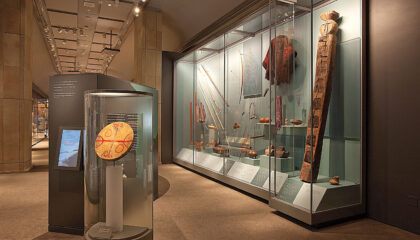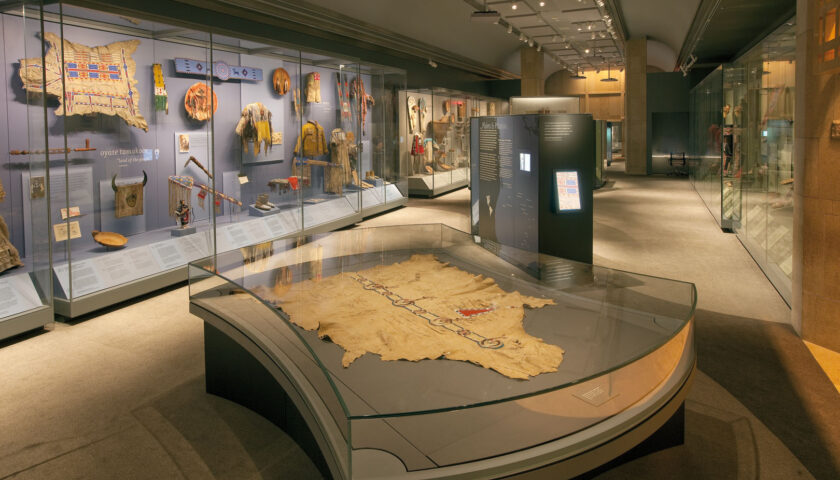National Museum of the American Indian
Smithsonian Museums
New York, USA
2009-2010
Units
34
Area
600 m2
Length of exhibit fronts
170 m
The National Museum of the American Indian (NMAI) houses one of the world’s great cultural resources, with collections representing the native peoples of the Americas from their earliest history to the present day. With 825,000 objects from over 1,200 indigenous groups from Canada, the U.S., Mexico, South America and the Caribbean, the museum retraces the 12,000 year history and culture of these peoples. The “Infinity of Nations” exhibition opened to the public in 2010, with a display of 700 objects carefully curated objects of particular cultural, historical, and aesthetic importance at the museum’s George Gustav Heye Center in New York City .
Exhibition design: Celia Imrey, Imrey Culbert LP, New York; Gerard Breen, NMAI – Exhibitions Department, New York
The challenge
Modular wall cases, the largest of which stand 3.65m tall and run up to 13m long, were central to the exhibit design. These cases, despite their minimal visible framing, structural glass mullions, glass tops, and exceptionally large doors, had to have the structural integrity to maintain a completely airtight seal yet still be visually clean and easy for a curator to open single-handedly. Another challenge was engineering the special 3.00m x 2.40m x 1.00m “Buffalo Hide” case, which included precision bent and pattern-cut glass and a sophisticated electrical lifting mechanism. Adding to the significant case engineering challenges, all pieces had to be sized and modularized so they could be delivered through a complicated logistic route that began at Goppion’s workshop in Italy, to a warehouse in Long Island City, to the historic Custom House in Lower Manhattan, and finally, rigged up through an interior stairwell to their assembly point in the second- floor galleries.
The solution
All display cases were custom-engineered in close collaboration with the museum’s designers. The design documents had been completed to a 65% stage, ideal for completion utilizing Goppion’s collaborative design assist process. With the help of an FEM structural analysis, Goppion engineers developed alternative solutions, introducing the O-Ring principle to the design. The developed engineering solutions were then implemented, presented and evaluated on a full-size prototype.
Having solved the technical challenges, Goppion was able to implement the engineering design so as to fit the pieces in containers bound for the U.S. Over the course of 12 weeks, 14 containers were imported, unloaded, rigged, and their contents installed, in tight coordination with the museum and their other contractors.
Ultimately, by applying Goppion’s unique prototype-based working method to the development of the engineering and our skilled craftsmanship in making the pieces, the beautiful display cases that comprise the “Infinity of Nations” exhibition successfully meet the needs of the design and the high level of conservation requirements demanded by the collection itself.





